Abstract
Seawater and shellfish samples collected in the vicinity of a marine sewage outfall were examined for the incidence of antibiotic resistance among coliform and fecal coliform bacteria over a 2-year period. Seventy percent or more of these two groups of bacteria from both sources were resistant to one or more antibiotics. Forty-five percent of the isolates resistant to streptomycin or tetracycline were capable of transferring all or part of their resistance pattern to an antibiotic-susceptible strain of Escherichia coli K-12.
Full text
PDF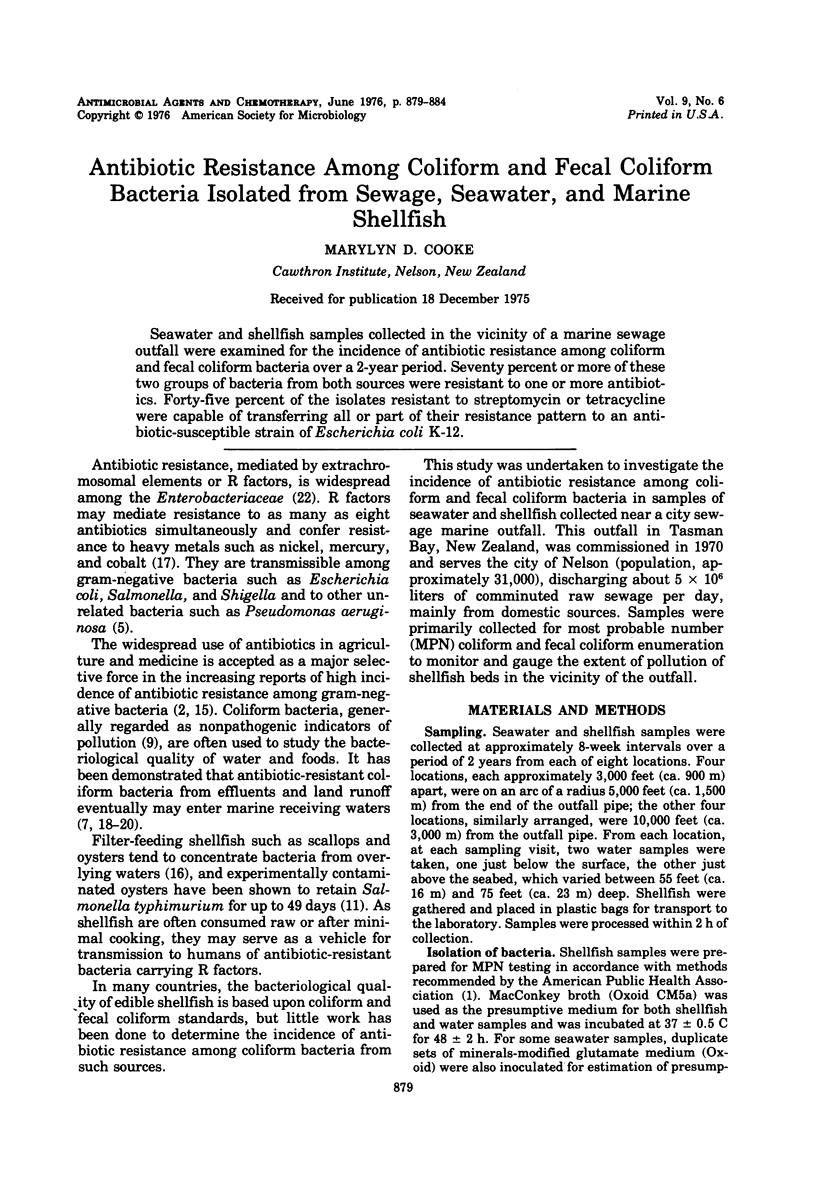
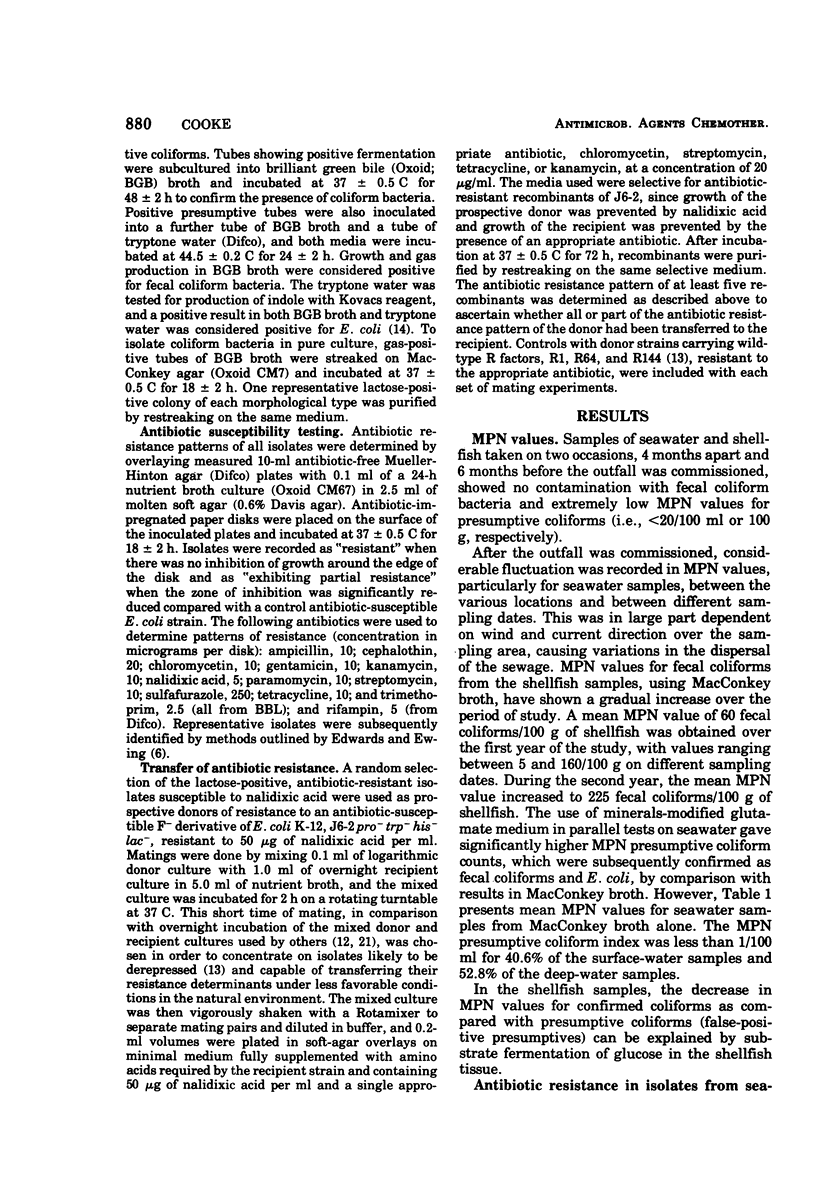
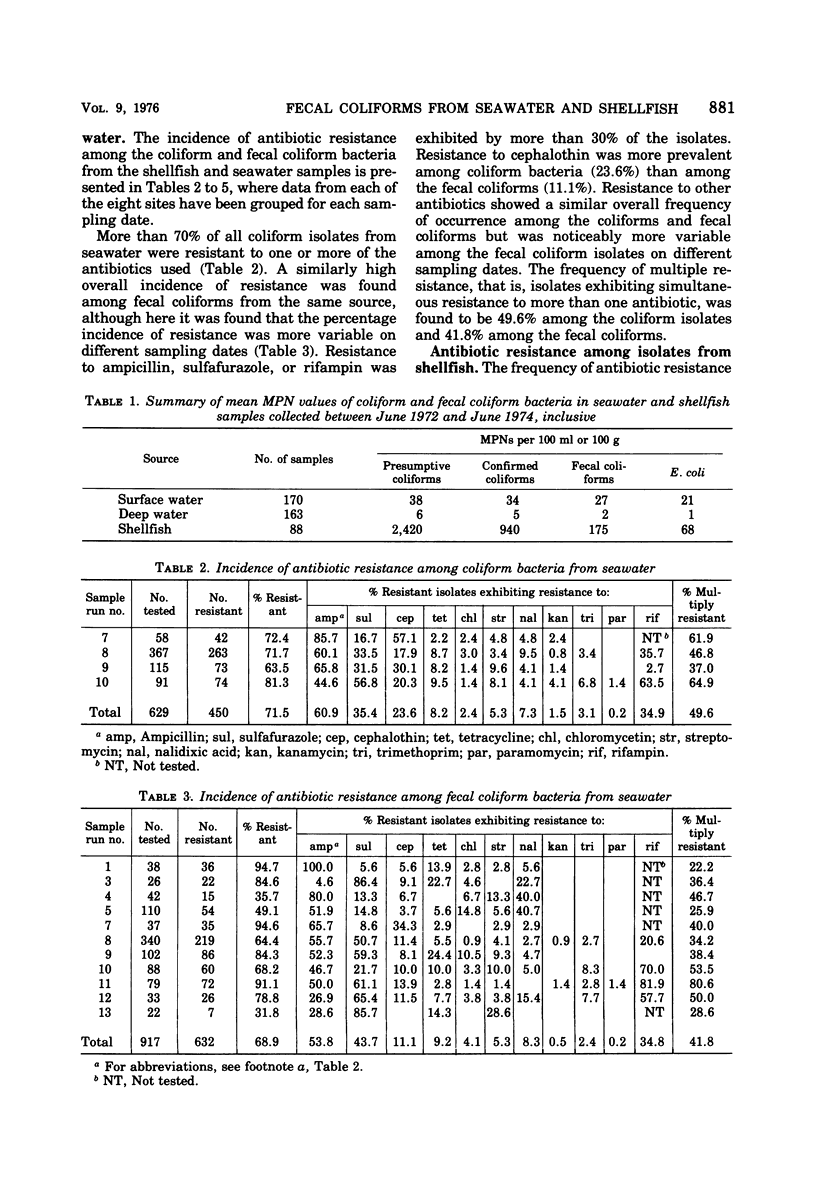
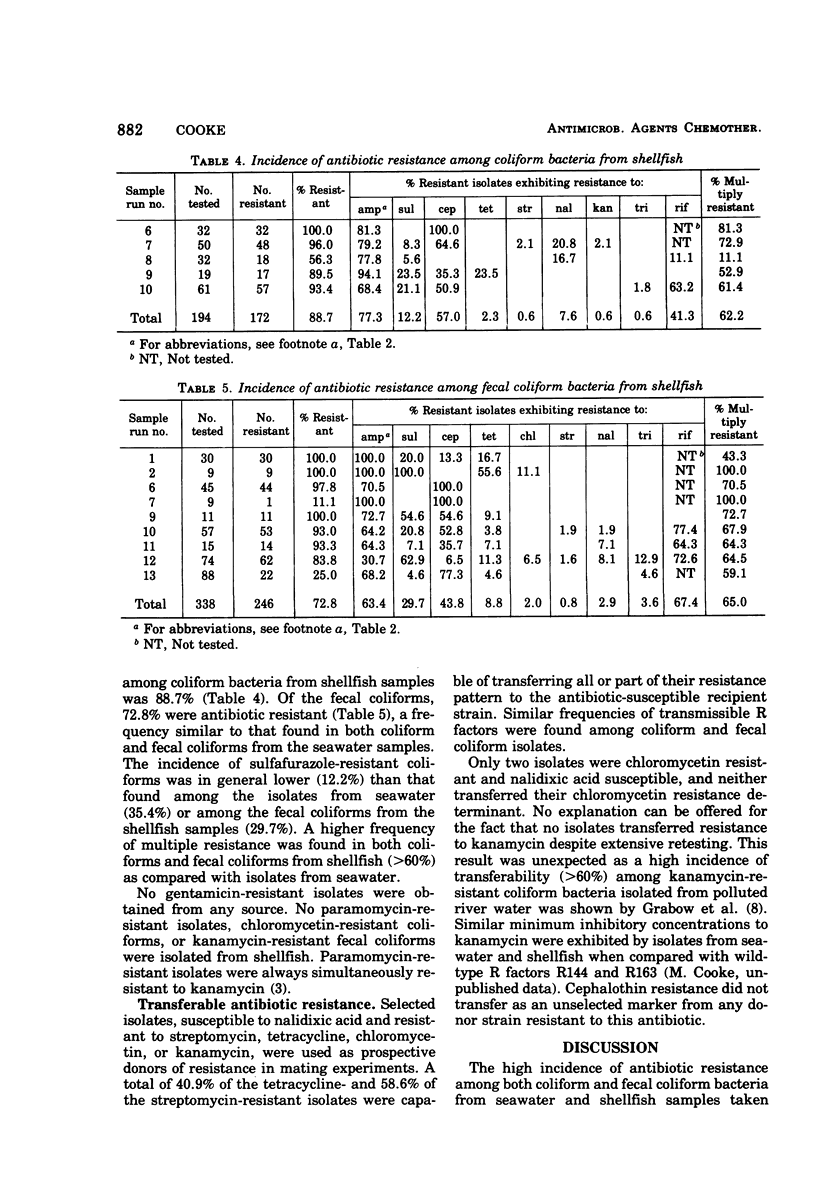
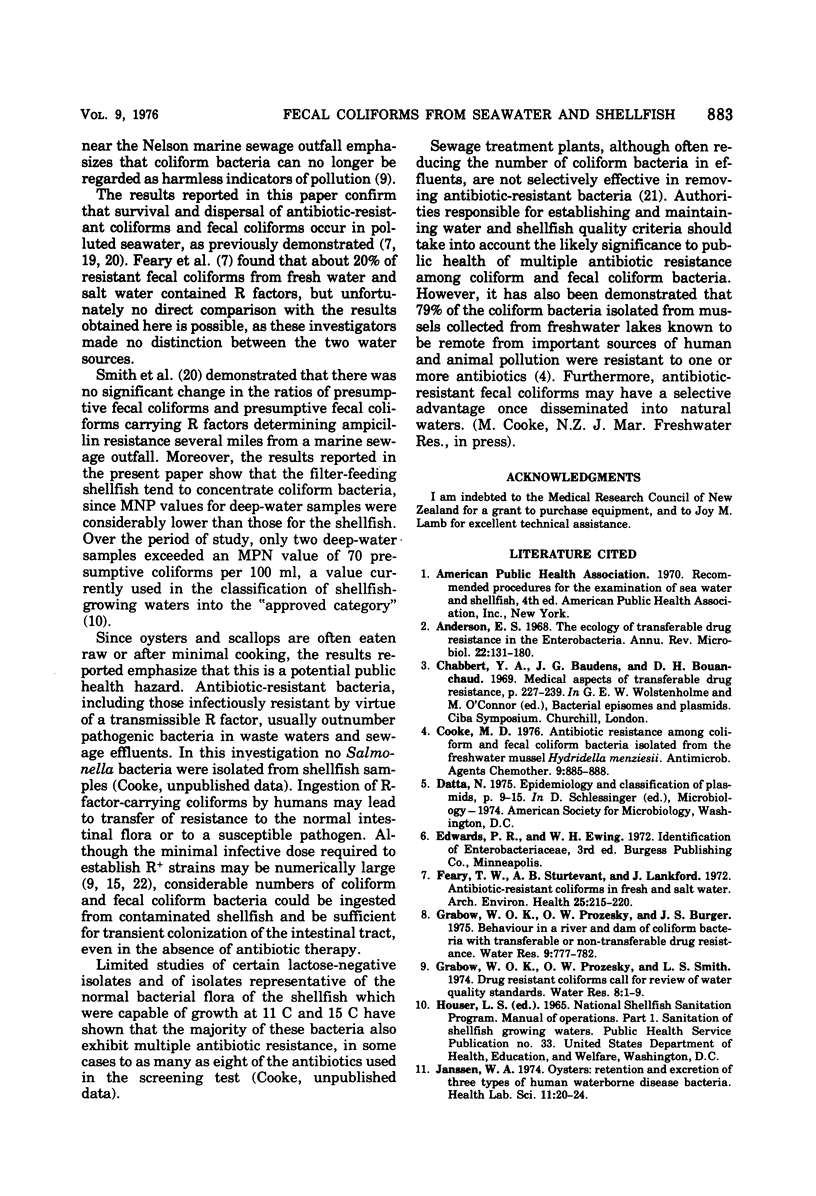
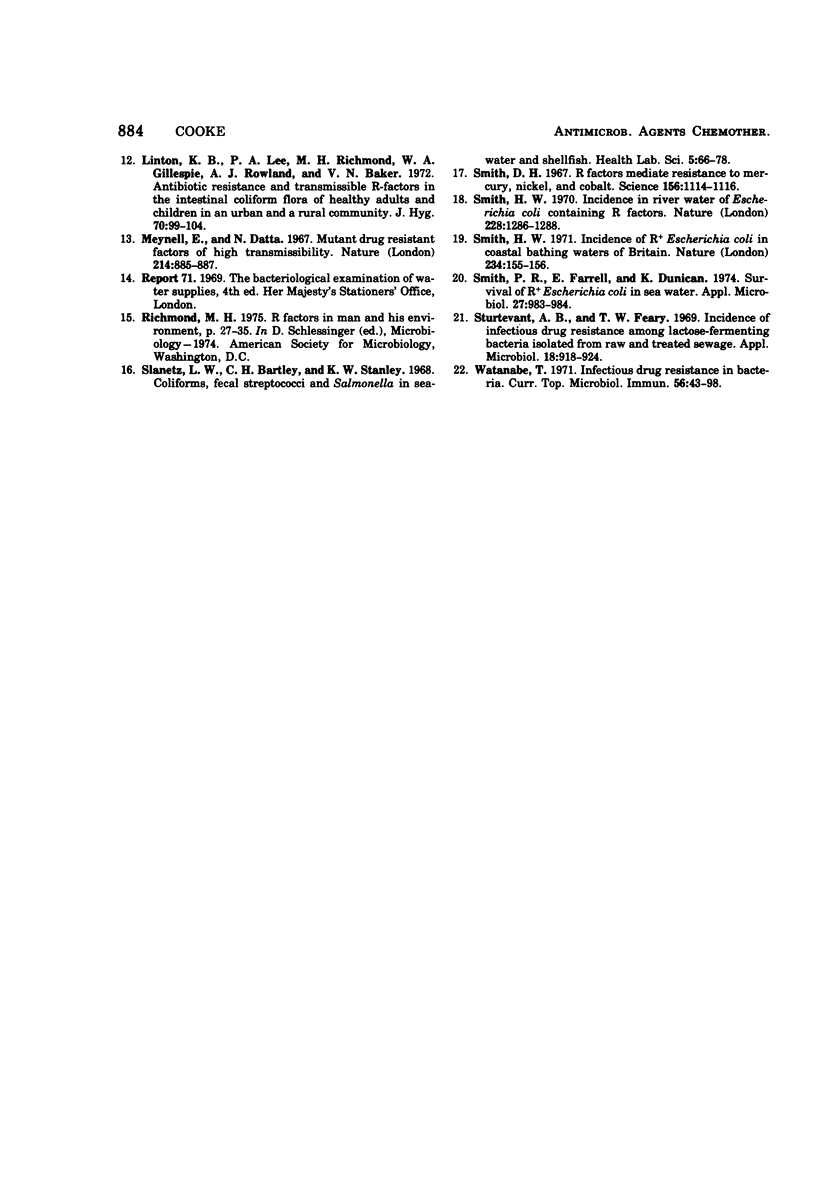
Selected References
These references are in PubMed. This may not be the complete list of references from this article.
- Anderson E. S. The ecology of transferable drug resistance in the enterobacteria. Annu Rev Microbiol. 1968;22:131–180. doi: 10.1146/annurev.mi.22.100168.001023. [DOI] [PubMed] [Google Scholar]
- Cooke M. D. Antibiotic resistance among coliform and fecal coliform bacteria isolated from the freshwater mussel Hydridella menziesii. Antimicrob Agents Chemother. 1976 Jun;9(6):885–888. doi: 10.1128/aac.9.6.885. [DOI] [PMC free article] [PubMed] [Google Scholar]
- Feary T. W., Sturtevant A. B., Jr, Lankford J. Antibiotic-resistant coliforms in fresh and salt water. Arch Environ Health. 1972 Sep;25(3):215–220. doi: 10.1080/00039896.1972.10666163. [DOI] [PubMed] [Google Scholar]
- Janssen W. A. Oysters: retention and excretion of three types of human waterborne disease bacteria. Health Lab Sci. 1974 Jan;11(1):20–24. [PubMed] [Google Scholar]
- Linton K. B., Lee P. A., Richmond M. H., Gillespie W. A., Rowland A. J., Baker V. N. Antibiotic resistance and transmissible R-factors in the intestinal coliform flora of healthy adults and children in an urban and a rural community. J Hyg (Lond) 1972 Mar;70(1):99–104. doi: 10.1017/s0022172400022130. [DOI] [PMC free article] [PubMed] [Google Scholar]
- Meynell E., Datta N. Mutant drug resistant factors of high transmissibility. Nature. 1967 May 27;214(5091):885–887. doi: 10.1038/214885a0. [DOI] [PubMed] [Google Scholar]
- Slanetz L. W., Bartley C. H., Stanley K. W. Coliforms, fecal streptococci and Salmonella in seawater and shellfish. Health Lab Sci. 1968 Apr;5(2):66–78. [PubMed] [Google Scholar]
- Smith D. H. R factors mediate resistance to mercury, nickel, and cobalt. Science. 1967 May 26;156(3778):1114–1116. doi: 10.1126/science.156.3778.1114. [DOI] [PubMed] [Google Scholar]
- Smith H. W. Incidence of R + Escherichia coli in coastal bathing waters of Britain. Nature. 1971 Nov 19;234(5325):155–156. doi: 10.1038/234155a0. [DOI] [PubMed] [Google Scholar]
- Smith H. W. Incidence of river water of Escherichia coli containing R factors. Nature. 1970 Dec 26;228(5278):1286–1288. doi: 10.1038/2281286a0. [DOI] [PubMed] [Google Scholar]
- Smith P. R., Farrell E., Dunican K. Survival of R+ Escherichia coli in sea water. Appl Microbiol. 1974 May;27(5):983–984. doi: 10.1128/am.27.5.983-984.1974. [DOI] [PMC free article] [PubMed] [Google Scholar]
- Sturtevant A. B., Jr, Feary T. W. Incidence of infectious drug resistance among lactose-fermenting bacteria isolated from raw and treated sewage. Appl Microbiol. 1969 Nov;18(5):918–924. doi: 10.1128/am.18.5.918-924.1969. [DOI] [PMC free article] [PubMed] [Google Scholar]
- Watanabe T. Infectious drug resistance in bacteria. Curr Top Microbiol Immunol. 1971;56:43–98. doi: 10.1007/978-3-642-65241-7_3. [DOI] [PubMed] [Google Scholar]


